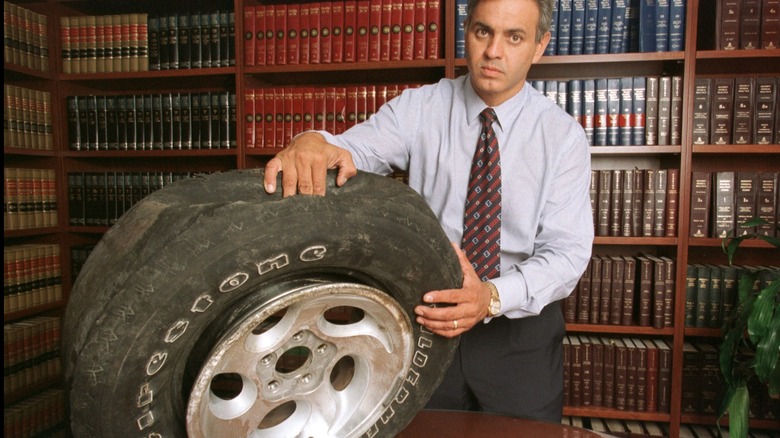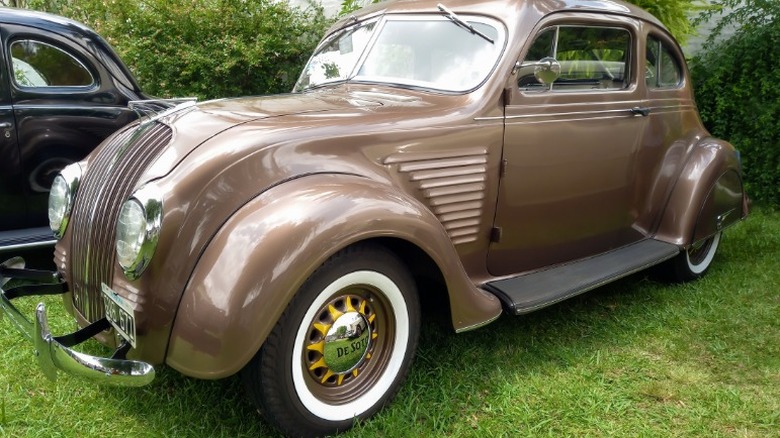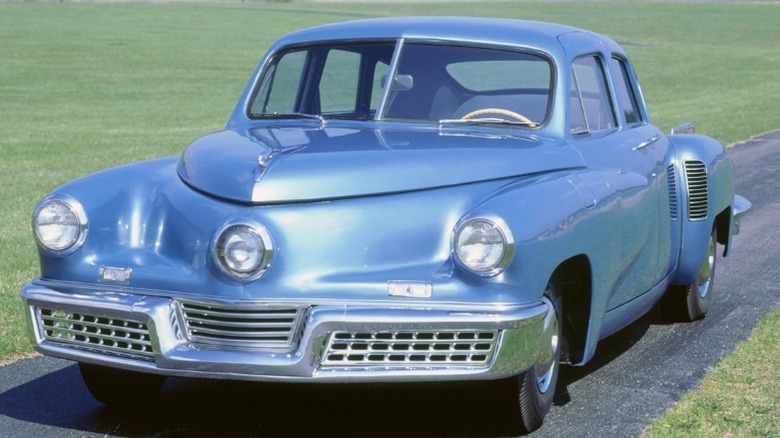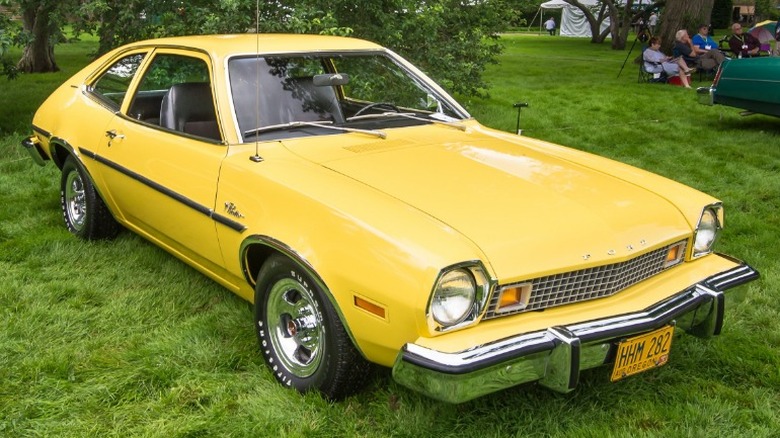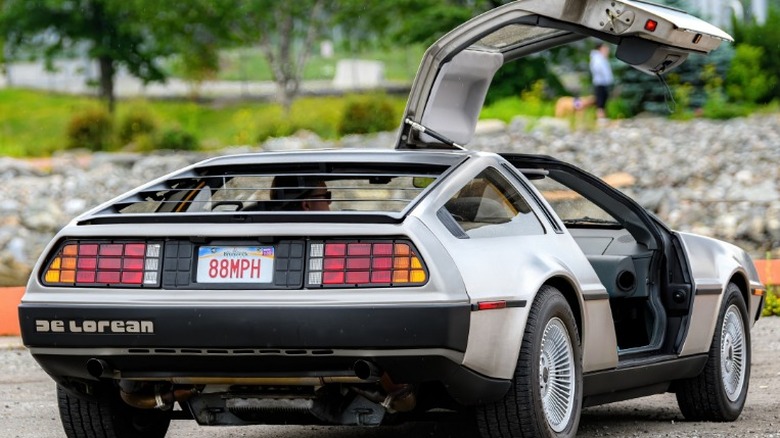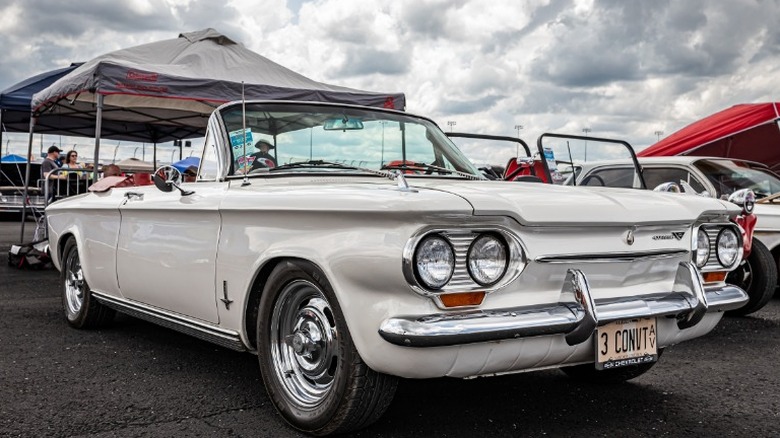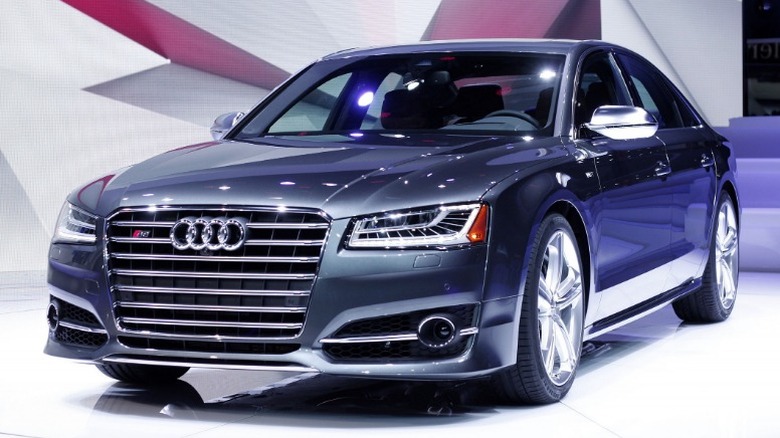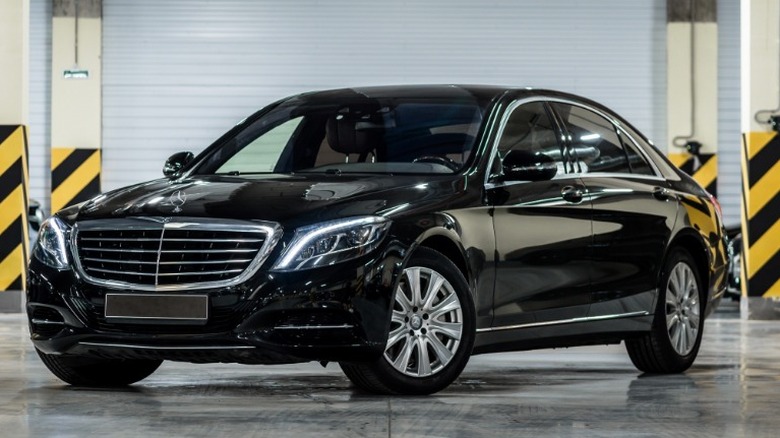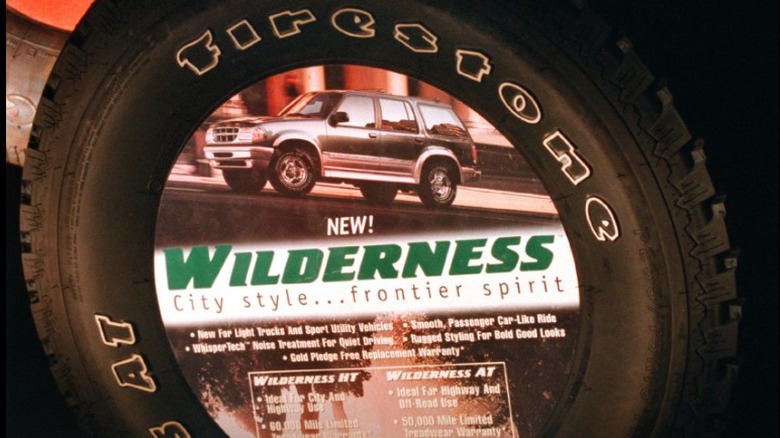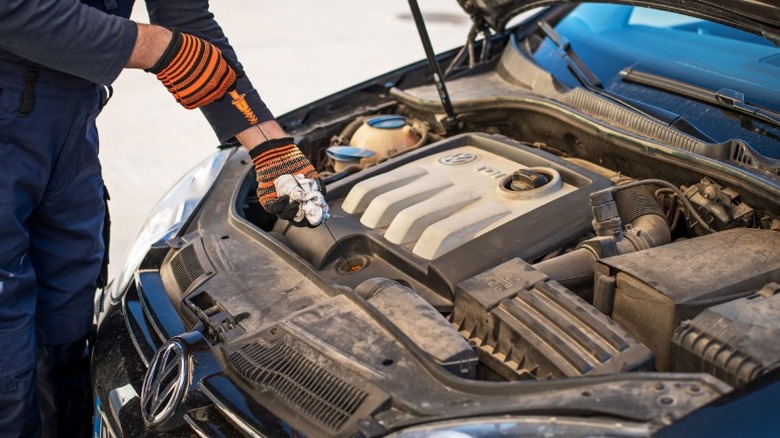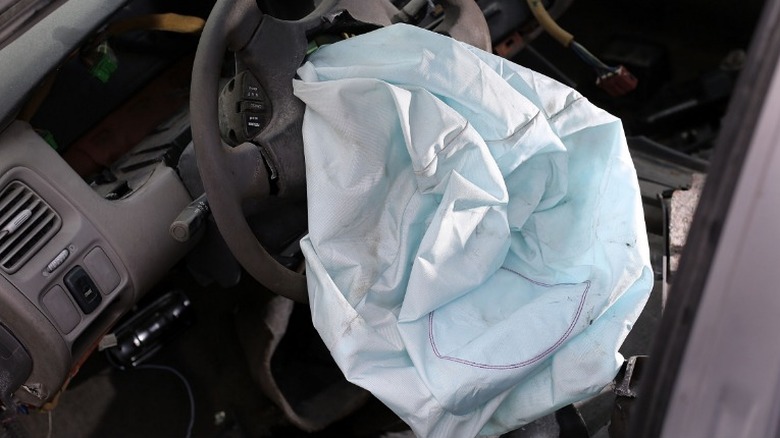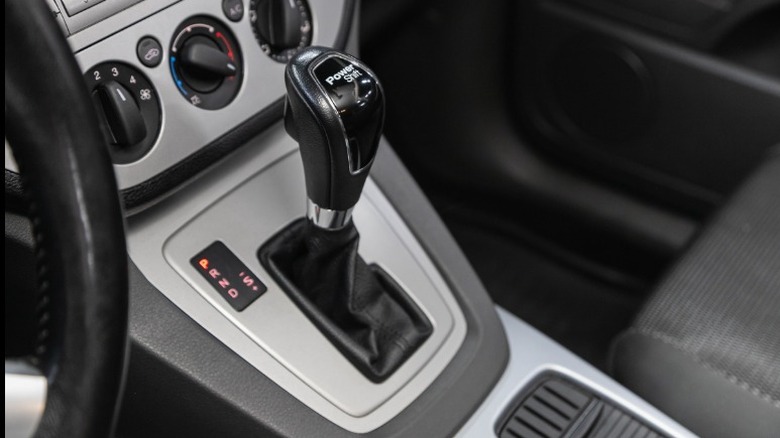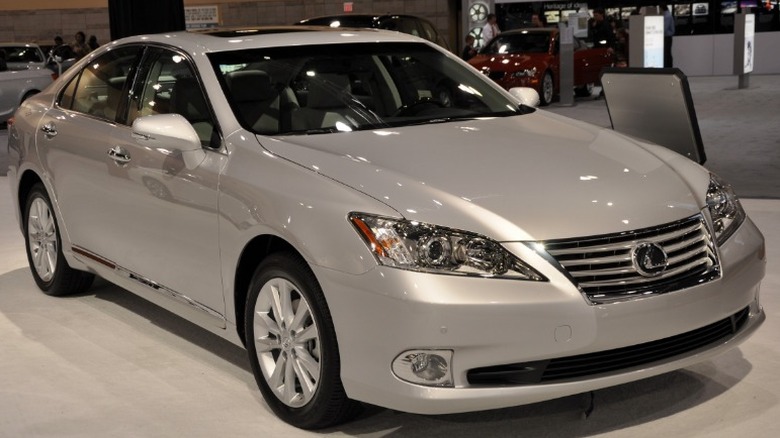Massive Car Scandals That Rocked The Industry
Automobile manufacturing ranks among the top ten largest industries in the world. According to Statista.com, the global automotive industrial market reached $2.86 trillion in 2021. While the growth is still slow after feeling the effects of COVID, the market is expected to rise by about $2.95 trillion in 2022. Automotive maker Ford Motor Company is one of the largest with a 2020 revenue of $136.34 billion (down from $155.9 billion in 2019 due to COVID).
With so much revenue at stake, automakers are highly incentivized to find ways to beat their competition and gain market share. As with any industry, maximizing profits by reducing operating costs is often the course taken. Sometimes the results benefit the automobile customer with improved technology, performance, and safety, but occasionally the effect is a disaster.
According to CarBuzz, in 2014 alone, more than 60 million vehicles were recalled. Many of these recalls addressed safety issues and most car companies genuinely seek to correct faulty systems that can put drivers at risk. However, some carmakers and suppliers have engaged in shady activities to increase profits. When these measures are exposed to the public, a huge scandal is generally the result. Here are 12 massive car scandals that rocked the automobile industry.
General Motors advertisements kill the Chrysler Airflow
When the Chrysler Airflow was launched in 1934, it represented a significant divergence from traditional automobile design, employing a radical aerodynamic body style that distinguished it from any other car on the road. In the early days of automobile manufacturing, very little attention was given to body aerodynamics and the effect of wind resistance on performance. However, Chrysler engineers Carl Breer, Fred Zeder, and Owen Skelton realized that cars made with the internal compression engines of the time would never achieve their maximum efficiencies. The three met with aviation pioneer Orville Wright who suggested building a wind tunnel to test automobile aerodynamics on small-scale prototypes.
Chrysler listened to Wright's advice and built the industry's first full-scale wind tunnel at the company's headquarters in Highland Park, Michigan. Early wind tunnel tests provided Chrysler engineers with some unexpected results. They discovered that Chrysler models built in the early 1930s produced less wind resistance when driven backward. The discovery led to a new teardrop design and eventually Airflow's streamlined body style.
General Motors felt so threatened by the advanced design of its closest competitor, that the company placed advertisements in the Saturday Evening Post claiming that the new vehicle was a copy of a top-secret GM design. Furthermore, GM declared the car unsafe to drive. The smear campaign succeeded, GM faced no repercussions for its actions, and the Airflow was discontinued in 1937.
The Tucker 48 fraud charges
In 1948, American automobile designer Preston Tucker introduced a new advanced automobile to the market, capturing the public's attention with streamlined styling, innovative safety features, and engineering firsts in the automobile industry. However, the founder's suspect business practices, including selling dealership rights before the car existed, prompted an investigation by the Securities and Exchange Commission for fraud.
The distinguishing feature of the Tucker 48 was its "Cyclops Eye," a centrally located third directional headlight that activated to light the car's path around corners at steering angles of greater than 10 degrees. Although earlier autos had large headlamps that rotated as the front wheels turned, none had a rotating headlight mounted flush with the front end of the car. In 1948, 17 states had laws prohibiting cars with more than two headlights, but Tucker fabricated a cover for the center light to comply with the restrictions in these states. The unique vehicle also included advanced safety features like a shatterproof pop-out windshield, reinforced safety cell, and a padded dash.
Desperate for cash, Tucker began selling car options and accessories to buyers whose cars had yet to be built. However, after several holdups delayed the start of production, the government stepped in. In 1950, the SEC indicted Tucker and his board of directors for fraud and closed company operations. The factory manufactured only 51 cars. Today, the Tucker 48 is one of the most desirable classic cars in the world.
Ford Pinto exploding fuel tank
The 1970s energy crisis prompted American automakers to manufacture smaller, more fuel-efficient vehicles. Ford introduced the Pinto as the company's entry into the expanding segment of compact models. The car was an early success with 352,402 units manufactured in 1971 and a peak of 544,209 produced in 1974. However, the Pinto had a fatal flaw that Ford knew about before the first models rolled off the assembly line.
In April 1974, the Center for Auto Safety requested the NHTSA recall Ford Pintos due to a gas tank design defect that made the vehicles susceptible to fire during low-to-moderate-speed rear-end collisions. The Center's petition was prompted by three deaths and four serious injuries.
In 1977, Mother Jones Magazine published an article based on Center for Auto Safety files demonstrating that Ford knew of the fuel tank design flaw before the vehicle was placed on the market. The automaker had conducted a cost/benefit analysis which suggested that the liability costs for burn deaths and injuries would be lower than the cost to correct the fuel tank defect.
According to Popular Mechanics, reports range from 27 to 180 deaths from Pinto fuel tank fires. Ford recalled 1.5 million units in 1980 and a Justice ordered the automaker to pay more than $100 million in civil damages. But the most damaging result for Ford was the PR disaster. Ford built only 74,237 units in 1977 and was forced to retire the Pinto in 1980.
John DeLorean's drug deal to save his company
The DeLorean DMC-12 became an icon of the 1980s mostly from the car's role as a time machine in the film "Back to the Future." Although the film was a success, DeLorean's car company struggled, and in October 1982, he was arrested for possession and attempted sale of 59 pounds of cocaine for $24 million allegedly to keep his car company afloat.
John DeLorean is credited with designing the Pontiac GTO (considered by many enthusiasts as the first muscle car) and the Firebird, and he eventually became GM's vice president of car and truck production. In 1973, he left GM to pursue his own business interests. DeLorean started the DeLorean Motor Company in Northern Ireland, funded by the British government, and several investors. His "dream car" was unique. It boasted a stainless-steel body without paint, gullwing doors, and a 130-hp Renault engine.
However, the DeLorean did not sell well. According to carsalesbase.com, from 1981 to 1983 only 6,681 DeLoreans were sold in the US, from an estimated production of nearly 9,000 vehicles. At a price of $25,000, compared to a high-performance Corvette for $18,000 and an average car for $10,000, the DeLorean, with only mediocre performance, was too expensive. With his car company in bankruptcy, DeLorean was acquitted of the drug charges in August 1984. However, he went on trial for fraud and over the following two decades paid millions of dollars to lawyers and creditors.
Chevrolet Corvair Unsafe At Any Speed
In 1960, General Motors introduced the Chevrolet Corvair in response to the growing popularity of small, imported vehicles such as the Volkswagen Beetle. Available in several body styles, including a coupe, sedan, and wagon, the sporty car featured a rear-mounted, air-cooled, flat-six engine. The Corvair gained fame in 1965, not from its sporty good looks or exceptional performance but from its reference in Ralph Nader's pioneering book "Unsafe at Any Speed" which denounced the safety of contemporary vehicles.
Nader argued that the Corvair (1960-1964) swing-axle rear suspension could cause the inside wheel to tuck into the body during cornering resulting in oversteer. He pointed out that the original Corvair design included a front anti-sway bar which mitigated the rear suspension-related issues and significantly improved the Corvair's handling characteristics. However, before production began the automaker removed the bar to reduce costs. Without the standard front anti-roll bar, the car was potentially dangerous.
"Unsafe At Any Speed" helped change the automobile industry, promoting the passage of the 1966 National Traffic and Motor Vehicle Safety Act, the first meaningful automobile safety legislation in the U.S. The book also contributed to the demise of the Corvair beginning in 1966, though Corvair production had already declined from a peak of 329,632 units in 1961 and 328,500 units in 1962. Chevrolet produced 207,114 units in 1964 and by 1966 the output was down to 103,743 units.
Audi's inadvertent acceleration
In November 1986, "60 Minutes," ran a segment on the Audi 5000 titled "Out of Control." It highlighted interviews with owners who blamed the automaker for accidents that occurred when their cars suddenly accelerated without warning. The news story included footage of an Audi dangerously lurching forward under its own power. The demonstration was alarming, but the producers failed to tell their viewers that the car had been modified by the TV crew. A hole was drilled into the transmission and a compressor pumped air into it, causing the acceleration. It made for great TV drama, but it was entirely false.
Audi claimed the inadvertent acceleration was caused when drivers confused Audi's narrowly spaced gas and brake pedals. Audi owners believed the car's brakes were failing when they were actually depressing the accelerator. Research continues for a definitive cause of Audi 5000 inadvertent acceleration but in the interim, Audi has installed over 32,000 interlock devices that prevent transmission engagement without the driver pressing on the brake. Audi even asked 5000 owners to bring their cars to an authorized dealer for a free installation.
After the "60 Minutes" piece, lawsuits multiplied and consumers fled. As a result, Audi sales plummeted from 74,061 units in 1984 to a mere 12,283 in 1991, and it took nearly 20 years for the company to return to its pre-1986 American sales numbers.
Daimler bribes international officials
In February 2022 Daimler became the Mercedes-Benz Group with a focus on its automobile business. While the automaker manufactures some of the most luxurious high-quality cars on the market, the company's history is not without controversy. In 2010, the United States Securities and Exchange Commission concluded an investigation and settlement with Daimler AG for violations of the Foreign Corrupt Practices Act (FCPA). The SEC accused the Stuttgart, Germany-based automobile manufacturer of engaging in a recurring and systematic practice of paying bribes for more than a decade to foreign government representatives to win business in Eastern Europe, Africa, the Middle East, and Asia.
The practice ran rampant throughout the company despite the adoption of an integrity code with anti-bribery provisions by the company's board of directors some 11 years before. Many Daimler executives actively resisted the directive or just ignored it. Daimler failed to enforce it and the inappropriate payoffs continued until 2008. The SEC determined Daimler had made at least $56 million in improper payments. The company earned $1.9 billion in revenue and $90 million in illegal profits through the transactions. In the settlement, the German car manufacturer agreed to pay a fine of $185 million.
Ford Explorer Firestone tire failures
In 2000, the National Highway Traffic Safety Administration opened an investigation into a Firestone tire tread separation on the Ford Explorer that eventually determined the practices of both companies contributed to the widespread failures. More than 6 million tires were recalled in 2000 and by 2020 at least 271 people had died in accidents and many more were injured.
Most of the Ford Explorer Firestone tire accidents occurred after the tire treads peeled off. The tire either ruptured or malfunctioned causing the drivers to lose control and resulting in turnovers or crashes. Today, it is still uncertain why the specific tires involved in the recall had such a high occurrence of tread separation. Former employees who worked at the Firestone plant in Decatur, Illinois, where many of the recalled tires were made, claim lax quality control and poor working conditions at the factory may have resulted in an inferior product.
Another significant factor may have been low tire inflation. Ford knew the Explorer tended to roll over during sharp turns, and that the problem intensified when the tires were fully inflated. The company recommended owners under-inflate the tires to 26 psi (35 psi is normal). However, a tire with less air has a larger area of contact with the road, generates more friction and heat, and increases the failure rate. After lawsuits and a Congressional investigation, Ford and Firestone ended a partnership dating back nearly 100 years, and the CEOs of both companies resigned.
Volkswagen diesel emissions cheating
On September 18, 2015, the U.S. Environmental Protection Agency served German automaker Volkswagen with a violation of the Clean Air Act. In the document, the agency explained how Volkswagen engineers had difficulty building a diesel engine that would perform well and meet stringent U.S. emissions standards. Instead, the engineers designed a system to switch on emissions controls during testing and turn them off for normal driving. The scandal was initially exposed in the U.S. when researchers in West Virginia uncovered discrepancies between VW diesel engine emissions measured on the road and those in the standard lab test. They reported the inconsistencies to the California Air Resources Board and eventually, the agency discovered the emissions-cheating mechanism.
VW initially claimed the fraud was merely the work of two software engineers. However, the document also stated that managers repeatedly approved the system's use despite objections from other employees, and they encouraged engineers to keep the design a secret. The indictment claimed that former CEO Martin Winterkorn was not only fully briefed on his engineer's illegal activities, but also authorized a continuing cover-up. According to Reuters, the emissions scandal cost VW over $30 billion in the United States and forced Martin Winterkorn to resign. German prosecutors have also been investigating the involvement of other VW executives.
While automobile industry scandals usually impact a single corporation, the coverup forced regulators to closely evaluate diesel engine emissions, and it reduced the engine's popularity worldwide.
Takata airbags
While automobile recalls are commonplace and usually involve correcting a minor flaw or malfunction, none have been as big as the Takata airbag recall. NHTSA called it "the largest and most complex safety recall in U.S. history." Between 2000 and 2008, Japanese automotive supplier Takata produced airbags that were adversely affected by moisture and could activate with excessive force. If the airbag ruptures the metal housing, it can shower the interior with shrapnel and chemicals, causing potentially fatal injuries. NHTSA studies show airbags using ammonium-nitrate-based propellant without a chemical drying agent are the cause of improper airbag inflation. High temperatures, environmental moisture, and age contribute to the device's malfunction.
In 2014, the New York Times published a report claiming that Takata and Honda Motors had delayed alerting the public of the potentially dangerous airbags. In January 2015, the NHTSA issued a $70 million fine to Honda in civil penalties for failing to report warranty claims, injuries, and deaths resulting from defective devices.
According to Consumer Reports as of September 2021, defective airbags made by Takata have been the cause of 19 deaths and more than 400 injuries in the U.S. alone. NHTSA reports that worldwide the number exceeds 27 deaths. In the U.S. a recall that started with more than 30 million vehicles made by 10 different automakers grew to include 67 million airbags from more than 42 million vehicles by 2021. The Takata airbags disaster has the potential to drag on for decades.
The Ford transmission defect
Ford faced another disastrous recall in 1980. The NHTSA concluded a three-year investigation finding that Ford automatic transmissions made from 1966 to 1980 were built with a defect that allowed them to slip from Park into Reverse, causing the vehicles to move unexpectedly. As of June 10, 1980, NHTSA had received 23,000 Ford transmission complaints, with reports of 6,000 accidents, 1,710 injuries, and 98 fatalities, all directly attributed to transmission slippage.
The Ford transmission defect saga dragged on for years but concluded that the design defect affected 23 million 1966-1980 Ford products. The detent in the shifter mechanism separating the Park and Reverse positions was prone to rounding off with use, allowing the shifter to slip into reverse. After exhaustive legal wrangling, Ford negotiated a settlement avoiding a mechanical component recall and what most certainly would have been a financial disaster for the company.
NHTSA instructed Ford to mail out 23 million warning labels to owners with instructions to put them on their dashboards as a reminder to "make sure the gear selector lever is fully engaged in Park," and to "fully engage the parking brake" before turning the car off. The warning label solution was enough for Ford to avoid potentially the largest recall in history, but it came with a cost. According to the U.S. General Accounting Office, by June 1985, the number of transmission fatalities on pre-1980 Fords since the settlement was at least 106.
Toyota's accidental acceleration
In August 2009, Highway Patrolman Mark Saylor and three family members were killed in an auto accident when the accelerator in his Lexus become stuck on a replacement floor mat. Surprisingly, Saylor made a 911 call while his car was traveling at speeds over 100 miles per hour and described his traumatic ordeal right up to when the crash ended his life.
In November of the same year, ABC News reported the potential dangers of Toyota's unintended acceleration. The broadcast said hundreds of Toyota owners were in "rebellion" following a series of accidents involving "runaway cars" apparently caused by unintended acceleration. At first, Toyota blamed the unintended acceleration in several Toyota and Lexus models on driver error and then claimed that floor mats were hindering the release of the gas pedal.
In 2009 and 2010, Toyota announced a recall of 9.3 million vehicles worldwide to address the issue of accelerators sticking under floor mats, and repeatedly assured owners that the problem had been corrected. However, later Toyota admitted that recalls did not fix all the cars it knew were at risk. The automaker had concealed another cause of sudden acceleration they discovered during their investigations. The "sticky" pedals problem referred to the accelerator getting stuck when it is partially depressed. Toyota admitted that it misled the public and agreed to pay a $1.2 billion fine, the largest criminal penalty ever levied by the U.S. Attorney's Office on a car manufacturer.
